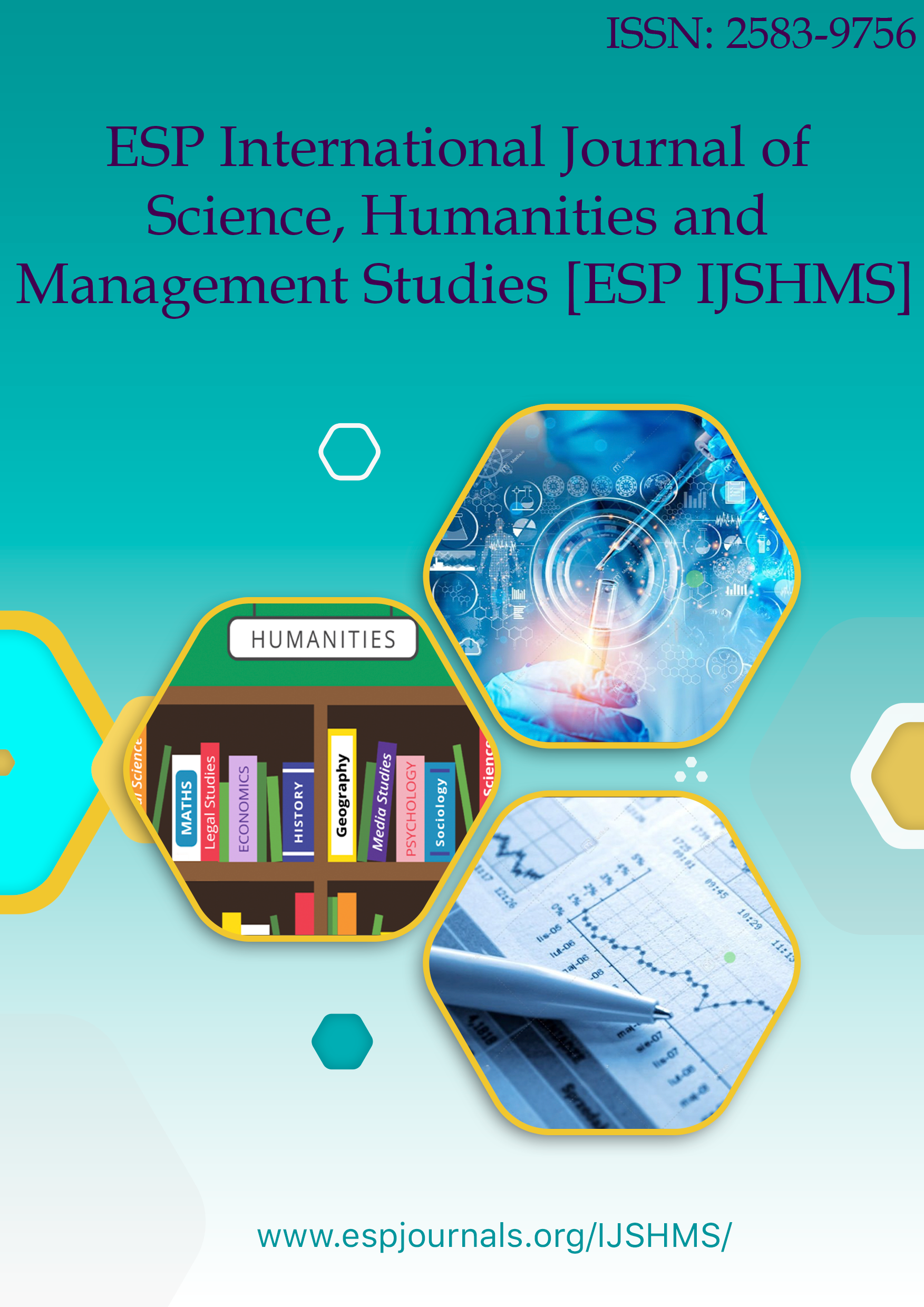ESP International Journal of Science, Humanities & Management Studies(ESP-IJSHMS)
Citation :
Peter B. Andersen, Sujit Kumar Paul, Buddhadev Biswas, 2024. "Isolated yet Living and Working among others during Covid-19 – Santals of Birbhum in India" ESP International Journal of Science, Humanities & Management Studies(ESP-IJSHMS) Volume 2, Issue 1: 88-95.
Abstract :
This article addresses the living pattern of the Santal Scheduled Tribe in India, a group of more than 6 million people, but here described on the basis of a few villages in Birbhum, West Bengal. The aim is to document how far a typical settlement and living pattern of rural Santals of West Bengal in India led to a lesser dissemination than among so many other Indian communities. In this way the article, accepts the general argument forwarded by Prof. A.B. Ota on the Scheduled Tribes in Odisha, but aims at adding content to the inner Santal perspective to his observations from outside. In this way the pandemic and the closedowns become a prism breaking the evidence regarding isolation in ways which makes implicit knowledge of integration evident.
References :
[1] Agoramoorthy, Govindasamy & Minna J. Hsu 2022. “COVID–19 and India's vulnerable indigenous populations”, Am J Hum Biol. 2022 Feb;34(2):e23608. doi:10.1002/ajhb.23608.
[2] Andersen, Peter B., Amit Prakash, Meghna Guhathakurta & Siri Hettige 2022. “COVID–19 and the Civil Societies in South Asia”, Naveiñ Reet. Nordic Journal of Law and Social Research 12, Special Issue: COVID–19 and Civil Society in India, Bangladesh and Sri Lanka, 17-38.
[3] Anonymous (‘Own correspondent’ (no name)) 13th March 2020. “Poster elo Ol-Chiki teu”, Anandabazar Patrika.
[4] Carrin, Marine 2021. “General Introduction”, Brill’s Encyclopedia of the Religions of the Indigenous People of South Asia (BERISPA), Leiden | Boston: Brill: 1-16.
[5] Das, Madhyparna, 2020, 3rd April, “These Bengal villagers found ways to keep COVID–19out, instead of waiting for govt help”, theprint.in (last accessed 31st January 2023).
[6] Datta-Majumdar, Nabendu 1956. The Santal. A Study in Culture-Change, Calcutta: Manager of Publications, Govt of India Press.
[7] Kelkar, Govind & Dev Nathan 2020. Witchhunts. Culture, Patriarchy, and Structural Transformation, Cambridge. Cambridge University Press.
[8] Morshed, Mohammad M. Morshed, Soumik Tripura, Mohammad A. Hossain, Mohammad M. Rahman, Asif Mahmud, Pratul D. Somadder 2021. ”The knowledge and perception about COVID–19 among three tribal population of Khagrachari hill district, Bangladesh: a community based cross sectional study on ongoing outbreak”, International Journal of Community Medicine and Public Health 8(7):3207-3214. DOI: https://dx.doi.org/10.18203/2394-6040.ijcmph20212568
[9] Muralidahar, G. 2019. ”Livelihood of Adivasis in India. Continuing Marginalization”, in ed.Rao V. Srinivasa, Adivasi Rights and Exclusion in India, London and New York: Routledge, 178-195. O’Malley, L.S.S. 1910. Santal Parganas. Bengal District Gazetteers, Calcutta: The Bengal Secretariat Book Depot [or later reprints].
[10] Ota, A.B. 2022, June. Impact of Pandemics on Tribal Culture of Odisha. With Special Reference to COVID–19, ADIVASI. Journal of Scheduled Castes & Scheduled Tribes Research and Training Institute (SCSTRTI), Bhubaneswar: Scheduled Castes & Scheduled Tribes Research and Training Institute (SCSTRTI)
[11] Paul, Sujit Kumar, 2015. “Rural Development, Concept and Recent Approaches”, Concept Publishing Company (P)Ltd.
[12] Paul, Sujit Kumar, 2020. “Enhancement and Securing Women and Child Health through Capacity Building and Technological Advancement”, Report submitted to the Department of Science and Technology, Government of India.
[13] Paul, Sujit Kumar, 2022. “Consequences of COVID–19 and Role of Gram Panchayats in Tackling the Pandemic Situation: Some Highlights of West Bengal”, NaveiñReet. Nordic Journal of Law and Social Research 12,Special Issue: COVID–19 and Civil Society in India, Bangladesh and Sri Lanka, 63-74.
[14] Prakash, Amit, Peter B. Andersen, Rubya Mehdi & Yasir Sharif 2021. “Dissemination of civil society in South Asia. Introductory considerations”, in ed. Peter B. Andersen, Rubya Mehdi & Amit Prakash, Re-Interrogating Civil Society in South Asia. Critical Perspectives from India, Pakistan and Bangladesh, Abingdon and New York: Routledge, 1-20.
[15] Saini Ajay & Nancy 2022. ”Whither Adivasi amid the COVID catastrophe?”, Am J Hum Biol. 2022 Feb;34(2):e23661. doi: 10.1002/ajhb.23661.
[16] Sen, Amartya. 1983. Poverty and Famines: An Essay on Entitlement and Deprivation, Oxford Academic Books. https://doi.org/10.1093/0198284632.001.0001
[17] Sen, Amartya. 2021.Home in the World. A Memoir, New Delhi: Allan Lane.
[18] Troisi, J. 1978.Tribal Religion. Religious Beliefs and Practices among the Santals, New Delhi: Manohar.
Keywords :
Working, Covid-19, Santals of West Bengal.


 : 10.56472/25849756/IJSHMS-V2I1P110
: 10.56472/25849756/IJSHMS-V2I1P110